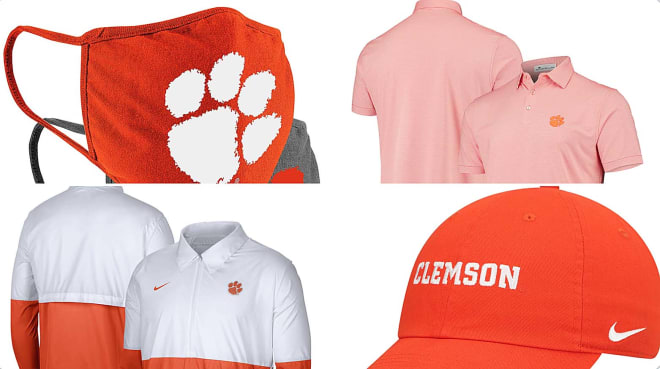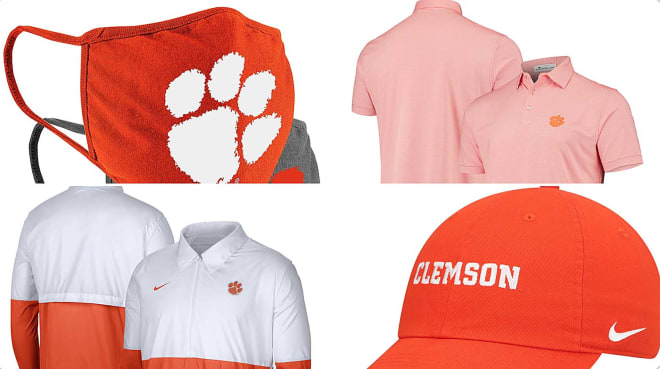FROM THE TIGER FAN SHOP: Click HERE for more DEALS on officially-licensed CLEMSON apparel and gear!

CLEMSON -- The 1985 Villanova basketball team will always go down as the quintessential Cinderella story, based in large part on the team it beat that night in Rupp Arena.
Join Tigerillustrated.com subscribers on The West Zone message board!
John Thompson and Georgetown were the villains, the team that everyone loved to hate -- often for no good reason.
ALSO SEE: Tuesday Recruiting Insider | Monday Coaching Staff Nuggets | THE STORY OF UIAGALELEI | THE STORY OF UIAGALELEI - Part 2 | THE STORY OF UIAGALELEI - Part 3 | Clemson signees | Clemson's junior commitments
And as the Wildcats celebrated one of the most remarkable upsets in college basketball history, there stood Thompson and the Hoyas: Utterly sickened by the national title-game defeat, but still there on the court for some reason. Standing and applauding.
Become a subscriber at Tigerillustrated.com!
"I always planned to be a teacher, not a basketball coach," Thompson wrote. "I used basketball as an instrument to teach. My classroom was the court. This time ... my classroom was Rupp Arena, with 23,000 fans rooting against us and 30 million more watching on television. Losing is a part of sports, an opportunity for the type of informal education that college athletics is supposed to be about. We stood in front of our bench and applauded Villanova as they accepted the championship trophy that should have been ours."
Dabo Swinney comes to mind frequently in a read of the splendid book: I Came As a Shadow, the 2020 autobiography of the man who died last August.
The powerful image from 1985 in Rupp Arena rekindles a powerful image from Clemson's 2017 regular season, when the previous year's national champion went to Syracuse and was upended by the Orange in a jolting upset.
Swinney was criticized for his decision to walk over to Syracuse's locker room and congratulate Dino Babers and the Orange. The in-the-moment whines over that classy gesture haven't aged well.
There are many reasons to dive into Thompson's memoirs, but for a Clemson fan it provides a reminder of Swinney's masterful construction of not just a power but a culture.
The Hall of Fame basketball coach and the future Hall of Fame football coach went about their business in much different ways and confronted many different obstacles, but they will both go down among the great program builders in the history of sports.
Swinney's foundational ideas came, of course, from Gene Stallings. But there's an almost startling philosophical overlap when learning the principles Thompson brought to the Georgetown job when he became the Hoyas' coach in 1972.
Years earlier, Thomson's life changed when he met Dean Smith. He leaned on North Carolina's coach often when he took charge of Georgetown's program, talking late into the night with him over the phone.
Smith offered Thompson the most important piece of advice he ever received:
"Seventy percent of coaching doesn't have anything to do with basketball. But that 70 percent affects whether you win or lose."
Thompson writes: "He was talking about all the little things that go into running a program, from when and where the team ate on the road to what time players got their ankles taped before practice. I had that specific advice in mind as I built the foundation of our program. Today they call it 'creating a culture.'"
He continues: "Our players unloaded their own bags from the bus; the managers didn't do it for them. We required players to clean up after themselves and to thank our managers and trainers, not treat them like servants. I've had NBA trainers tell me that Georgetown players always say thank you when they get up from the table, and the staff at Madison Square Garden said their locker room was cleaner when we left than when we arrived. We wore jackets and ties while traveling, never sweatsuits. We didn't talk loud in restaurants or sit on the backs of sofas in hotel lobbies. None of these things were about playing basketball."
Two months ago, after Clemson disposed of Virginia Tech in Blacksburg, the Hokies' grounds crew was impressed enough with the Tigers' comportment to send out this Tweet:
"Just a quick thank you to the Clemson University football team for leaving the visiting team locker room clean and in great shape after the game. Also thanks for stacking the chairs we set up for your post-game meal. Class act."
Of course, this goes much deeper than creating an impressive appearance so the impressed will say nice things about you.
It's about coaches cultivating more than just perception or athletic ability. When Swinney was first hired as head coach, one of his first objectives was creating a staff position devoted to preparing his players for life after football.
That position, manned by Jeff Davis, has now become an entire department in the Tigers' new football complex. It's called the PAW Journey, and the staffers there aren't concerned about what Player A did or didn't do on the football field last week.

Thompson spent his coaching career telling his players "more money is made sitting down than standing up."
"In exchange for the school's trusting my judgment on admitting players, we had to hold up our end of the bargain," Thompson writes. "The players had to attend every class, complete every assignment, and cut no corners. Our purpose was not for them just to pass. We had to make sure that they were educated. We did everything we could to help the players fulfill their academic responsibilities. If they didn't, a hammer came down on them. That hammer was swung by me.
"I didn't put the burden on Georgetown to handle a problem I brought here. I did everything in my power to help kids graduate, including a lot of them who didn't turn out to be good players. But if they didn't take advantage of that opportunity, I put them out. It didn't take but a year or two for Georgetown to see I was serious about getting rid of kids who did not study. After that, they trusted me more with recruiting."
Dikembe Mutombo arrived at Georgetown from the Congo not knowing how to speak English, and barely knowing what a zone defense was. He left with a degree and later built an entire hospital in the Congo, named after his mother. He led a group of players to South Africa and built homes there. He is now on the Georgetown board of trustees.
Thompson walked away from the game in 1999 proud of his .714 winning percentage, but prouder of the fact that 76 of the 78 players who played for him for four years earned their degrees.
At Clemson, of the 289 eligible senior lettermen and early graduates in Swinney's 12 full years, 284 (98.3 percent) have earned a degree.
In Thompson's time, the mere act of starting five black players was controversial and was one reason the Hoyas were viewed with disdain. Fans once threw bananas at Patrick Ewing.
So there are many stark differences in the leadership of these two men, and their paths.
But some eye-opening similarities between two all-time great program builders.
In some ways, a review of Thompson's autobiography feels like a preview of Swinney's memoirs.
FROM THE TIGER FAN SHOP: Click HERE for more DEALS on officially-licensed CLEMSON apparel and gear!
